How to Use a Sewing Machine Walking Foot
This post may contain affiliate links which won’t change your price but will share a commission.
Inside: How to Use a Sewing Machine Walking Foot
The most versatile of all sewing machine feet has to be The Walking Foot.
For years I have eavesdropped overheard sewists bragging about a sewing machine foot called the Walking Foot. Conversations would go like this, “I used my Walking Foot on the binding,” or “You will have to use your Walking Foot for sewing with knits.” That’s why I’m explaining How to Use a Sewing Machine Walking Foot.
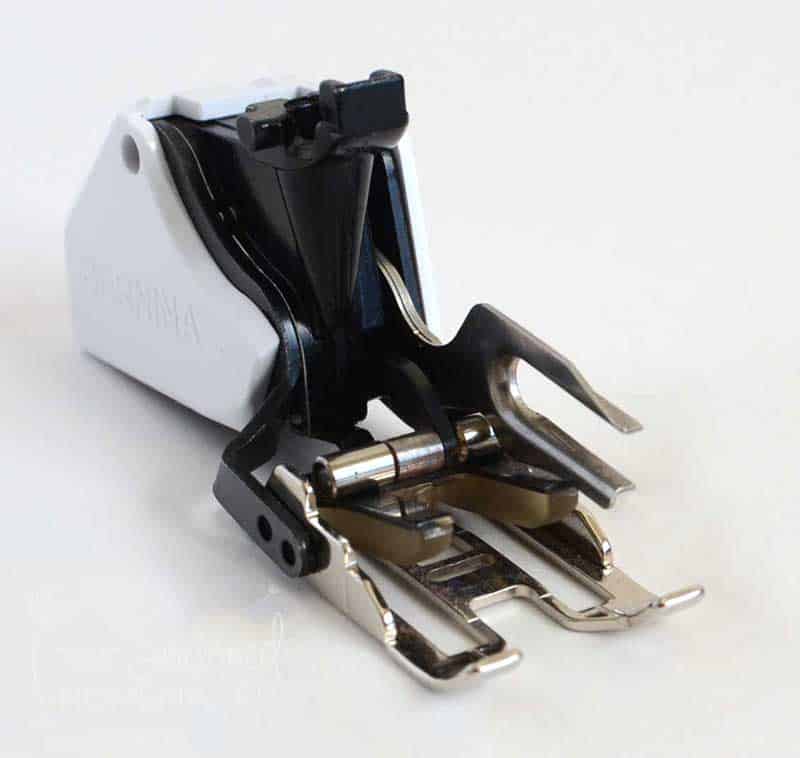
How to Use a Sewing Machine Walking Foot
The Walking Foot is an unusual looking foot that is designed to provide an extra set of feed dogs for the top of the fabric being sewn. This makes managing unusual fabrics manageable. Matching plaids or specific designs becomes simple. All of the sudden knits flow through your machine without growing. Slippery fabrics like minky cloth don’t slide all over the place. Bulky projects like quilts walk together.
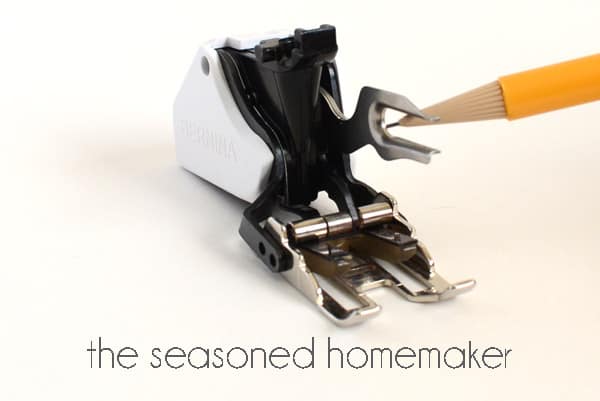
To begin with, the Walking Foot does not look like other sewing machine feet. It is big and bulky and has an arm that attaches to the needle bar. This extra bar now tells the sewing machine to pull the top fabric through the sewing machine at the same rate it is pulling the bottom fabric.
Some Details
My Walking Foot has three interchangeable soles. The Standard (or basic) Sole (which is the most common) is for attaching most fabrics. It is the one I use for knits and any fabric that has a give to it. The Standard Sole also has 1/4″ marking which makes it great for attaching narrow seams on slippery fabrics.
The Quilting Sole is open and has better visibility for quilting. The Quilting Sole also keeps quilt layers from slipping while machine quilting.
There is also an Edge-Stitching Sole. This sole is perfect for edge stitching quilt pieces or, in my case, top stitching stretch denim.
Note: Not all Walking Feet come with three soles; however, many of them will have markings or notches that provide the same effect.
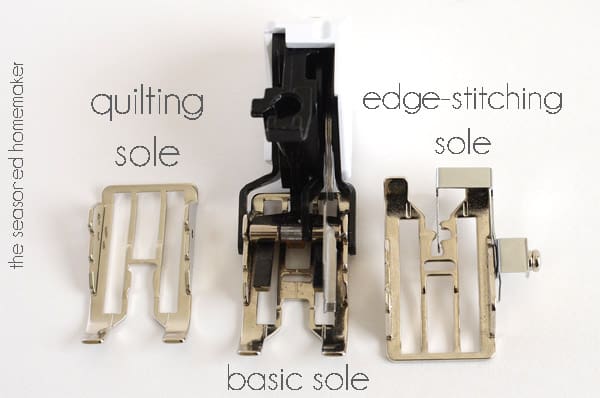
Perfect Seam Matching
To begin, attach the foot to the machine and attach the arm to the needle bar. It’s a little tricky. I always attach mine from right-to-left.
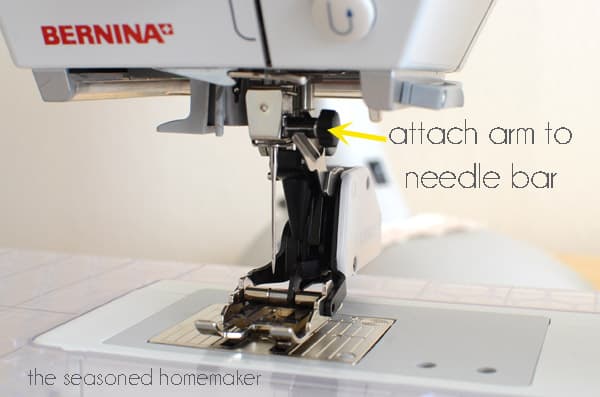
I used the Standard (or basic) Sole to match color-blocked seams below. I lined up my two matching colors and pinned. Had I used a universal presser foot, my two matching fabrics might have slipped slightly. Because I used a Walking Foot, the two fabrics matched perfectly.
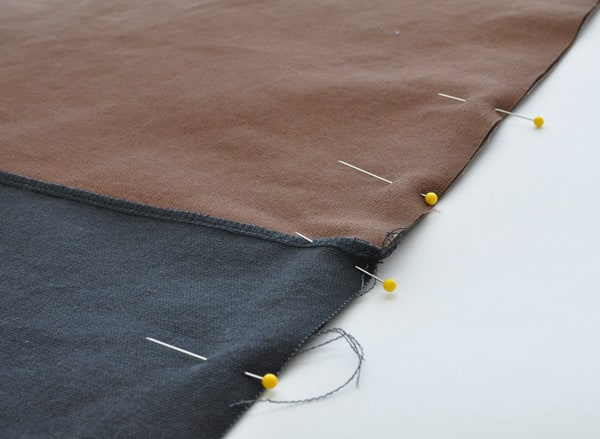
The Walking foot is also excellent for matching plaids and checks. I’ve demonstrated this with a large-checked gingham. However, this foot does a beautiful job matching stripes.
This matching did not require any skill. I pinned the checks and stitched with the walking foot. That’s how easy it is.
A Walking Foot is especially ideal when you want to pattern match your quilt backing.
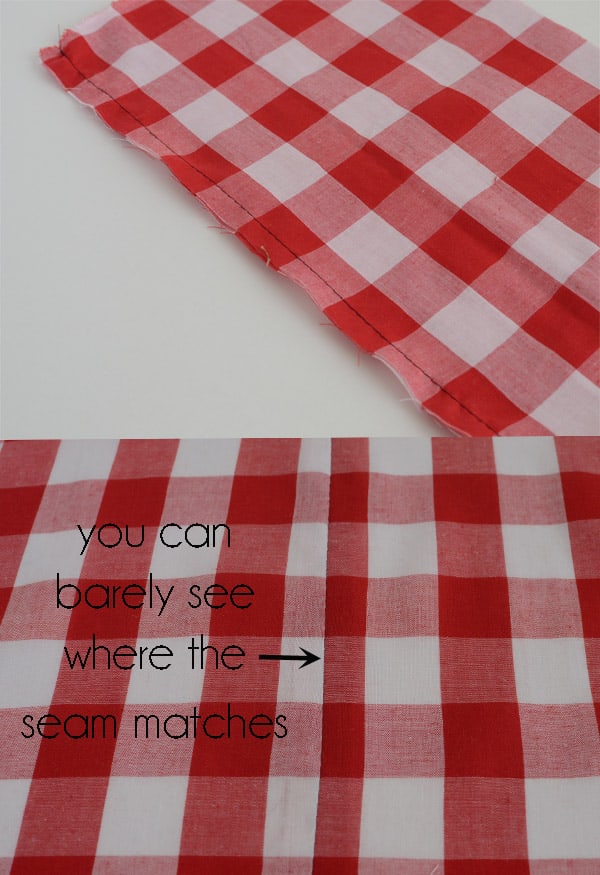
Perfect for Knits
I found my Walking Foot invaluable when making stretch denim jeans. If I hadn’t used it, the fabric would have stretched out too far. This is true with knits, too.
Below, I’ve sewn a piece of knit using a regular foot. Notice how the fabric stretches when I sew it. Note: The tiny zigzag is a stitch designed for attaching knits.
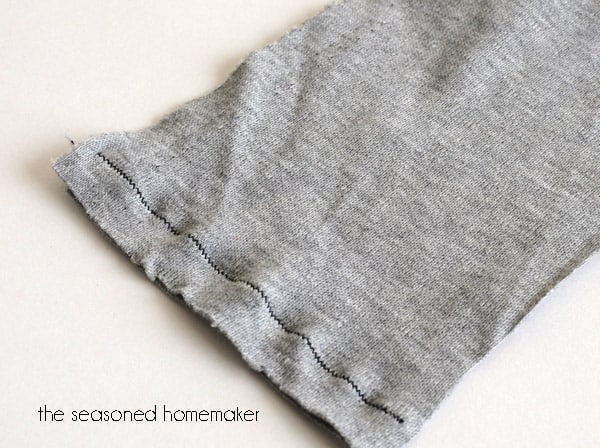
Then, I used the same stitch but this time with the Walking Foot. Can you see the difference? I always sew knits using a Walking Foot.
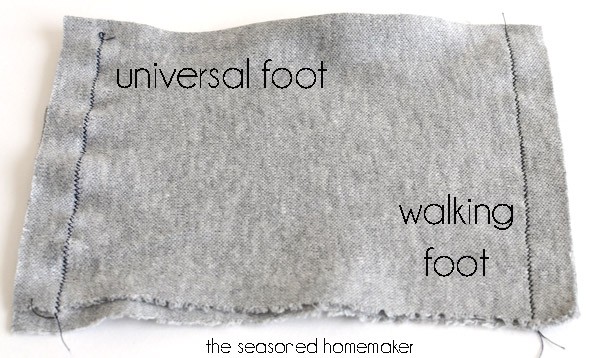
Ideal for Quilting
Additionally, the Walking Foot is ideal for quilting. When connecting quilting seams it can’t be beat.
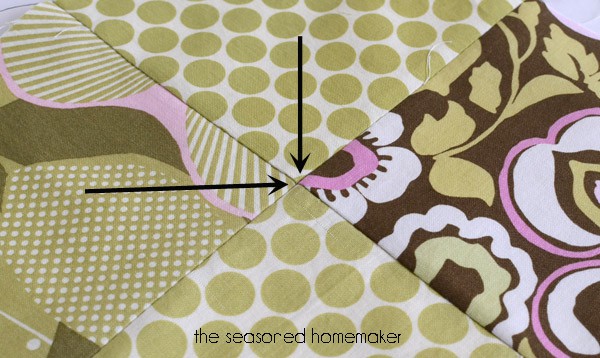
The Walking Foot prevents fabric from creeping when there are several layers. A good example of this is machine quilting. When trying to quilt through several layers, the top fabric will go one way and the bottom fabric will go another – no matter how many pins you have. This doesn’t happen with a Walking Foot.
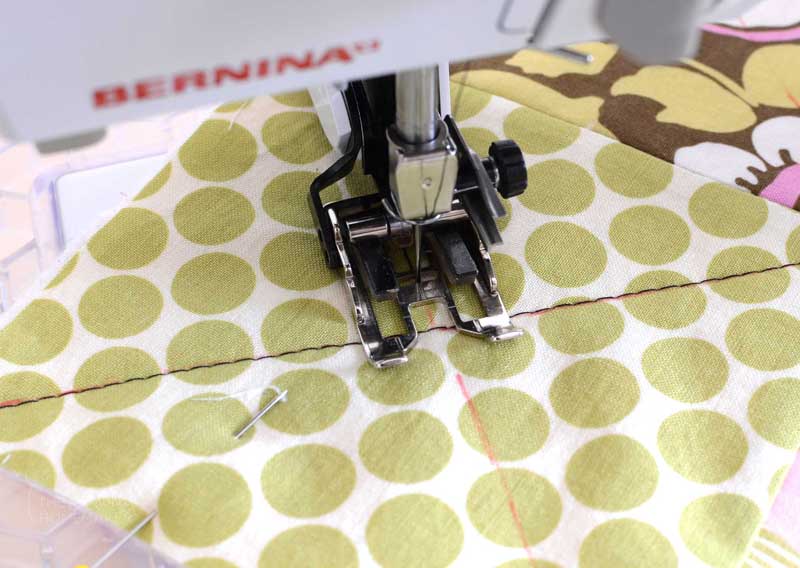
My non-existent quilting skill aside, the Walking Foot does a spectacular job with layers.Notice how my batting never shifted.
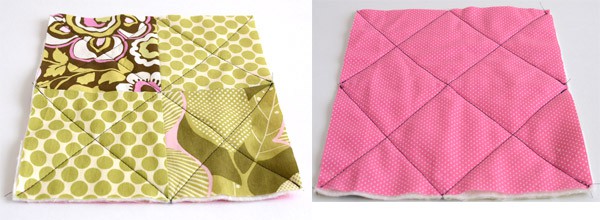
The Walking Foot is also ideal for any fabrics that tend to creep when sewing. Think minky, silks, velvets, and pleats as I mentioned before.
Worth the Investment
Purchasing a walking foot is what I would call an investment foot. The Bernina Walking Foot retails for over $150. I waited almost a year for a sale (30% off) before I purchased one. It was money well-spent, because I use it for sewing almost everything.
I originally purchased an off-brand online for around $50. I used this Walking Foot for several years before giving it to a friend. The key to off-brands is to make sure it will fit your particular sewing machine.
There is one other option, but it is ex-spen-sive! It’s a dual-feed feature that is built into high-end sewing machines. For a few thousand dollars (and numerous other features) an integrated dual feed can be yours.
Until you’ve saved up for that new machine, a walking foot attachment will definitely do the job!


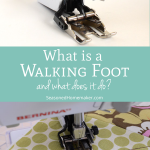
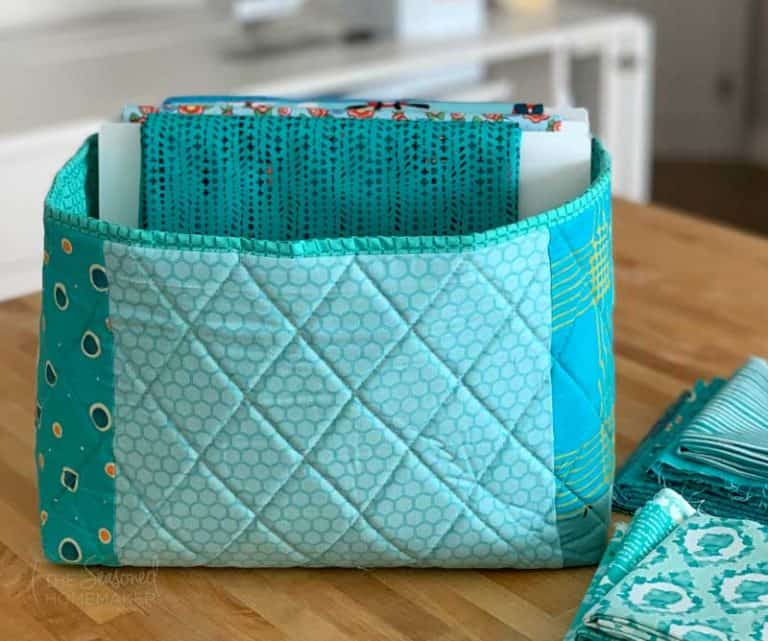
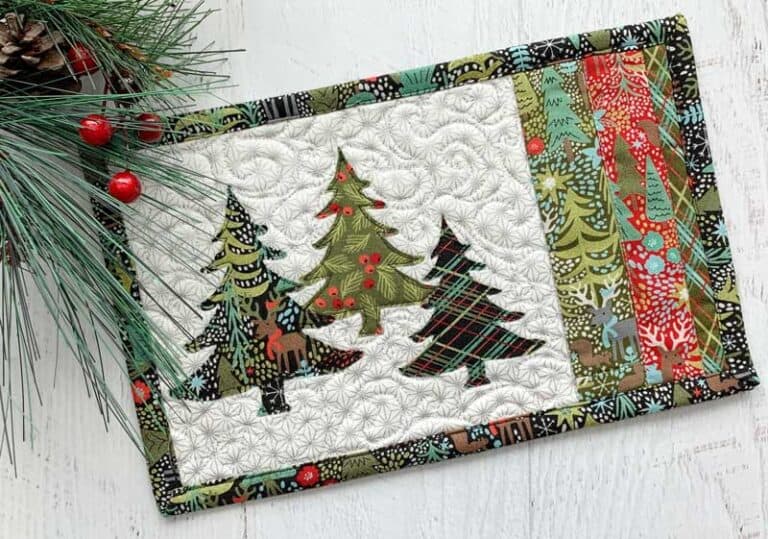

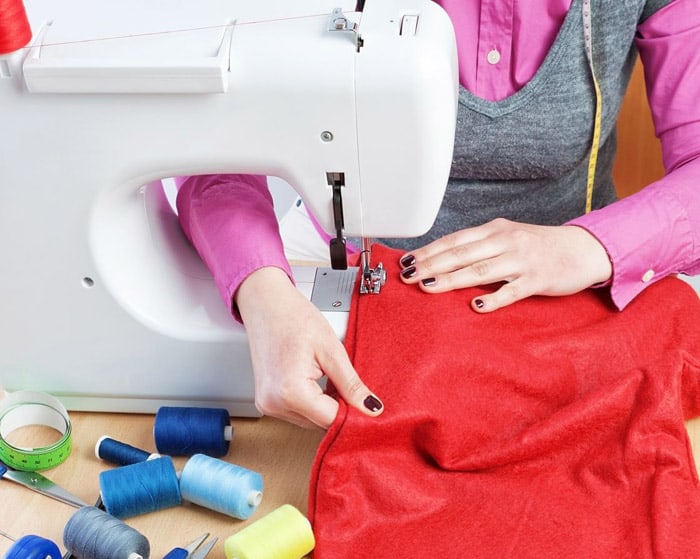
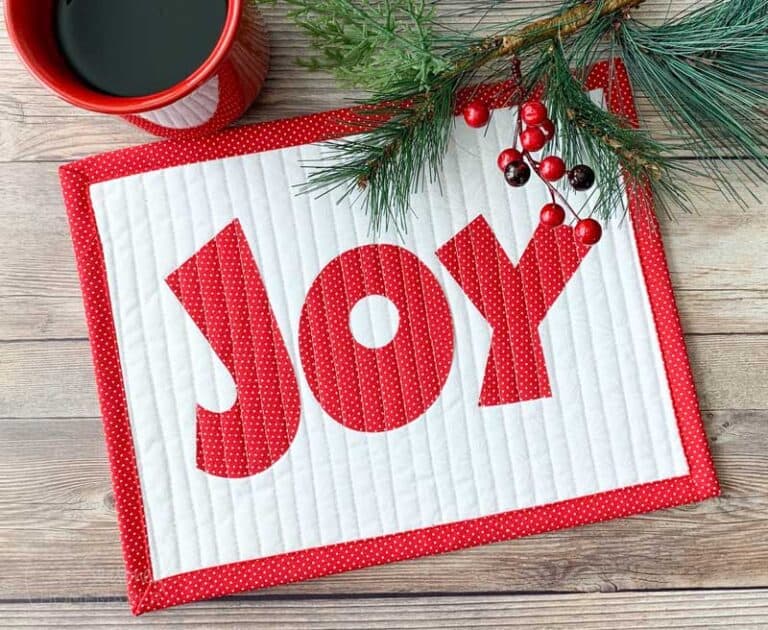
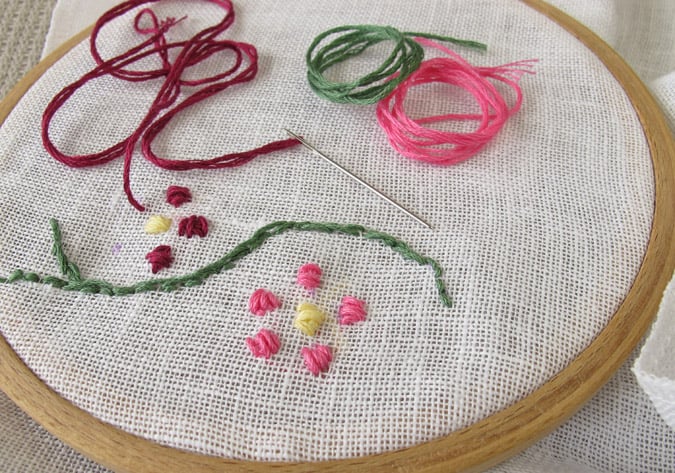
I never think to use my walking foot for knits,but I will give it a try next project.
I’m very envious of your sewing abilities! I can manage for things in my own house, but have to hire it out when working with others’ home projects. Sewing is just not one of my talents, or maybe it’s just the mechanical part. But my hubs is taking up upholstering as a retirement interest and I think he may find this very helpful. Thanks and have a great week.
I just recently got a Bernina, and you’ve convinced me that I need a walking foot. Is there only one option? Can you point me in the right direction of which one to buy?
I’ve always been the type to make do with what I have, but these feet look awesome! Thanks for all the information.
You will be amazed at the results you get from your sewing when you have the correct foot for the job. Happy sewing.
Hi! Completely new to quilting and just got my walking foot. What is that metal triangular piece for?
I believe you’re asking about the clamp that fits over the needle screw. This is what makes the walking foot works.
Okay, not I know what to ask for at Christmas time. Thanks for sharing, can’t wait to get my hands on a walking foot. Hopefully this will reduce the puckers in my knit projects. Thanks again!
It will absolutely reduce puckers in knits.
I’ve been waiting to buy my walking foot for a while – I quilt, I guess my justification is that if I can master quilting with a standard presser foot once I get the “right” tool for the job, my work will be phenomenal! (I have to say that stitching seams, even with a regular presser foot is getting much easier, and I barely ever have mis-matched corners anymore.)
That being said, I think this will be my next investment. 🙂
I waited months for a sale before I purchased my walking foot. Totally worth the wait and expense.
It seems Janome doesn’t make a walking foot? How do I find out what kind to get for a retired Janome Memory Craft? I tried their website and they don’t even list walking foot as an option.
I know this question is a year old at the time of reply but it might help others with the same problem. Janome makes several versions of the walking foot but they are referred to as the “even feed foot”. There are about 6 different ones listed on the Janome US website on the accessories page so I’m sure one or two would be suitable for your machine if you asked Janome. Cheap non-brand walking feet will also fit a lot of Janome machines.
I bought a very cheap walking foot for my Janome – from Ebay- and it works a treat. Well worth the risk. It also fits my very old Brother machine as well.
The only thing that I would add to Guy’s post is to make sure that you get the right size as there are a few different sizes for janome machines. (My mom has a different size even feed foot for her mc 8900 than I have for my 4120.)
Try Sears part site. I have the Kenmore version of the Memory craft and they still have the walking foot to fit my machine. If you search the web first or look in your manual and get the part number, it will be easier to find on the Parts site. Hope that helps!
Janome does have a walking foot..it called a
convertible even feed foot set.
I have a Janome New Home and found that a universal walking foot works on mine.
I have only had Janome machines since 1990. The MC 9000,Mc9700 and the MC9900 all great machines. The walking feet can be purchased from Janome dealers and sometimes sewing machine parts places. These feet make my sewing so much easier! I sew for charity and made over 100 lil dresses last year so my machines have to be real work horses. Haha
Have you checked Amazon for “Janome walking foot?” I got mine from them.
I’ve heard about people using the Janome Walking foot, but never tried it myself. Friends swear by it!
I have to agree a walking foot is one of my faves along with my 1/4 seam foot. great tips. I will have to try it with knits
Yep, the 1/4″ foot is pretty awesome – and not only for quilting. I use mine all the time.
I have a Janome and they do have a walking foot . Check a dealer.
Thanks for sharing this. I’m sure Janome owners will appreciate this!
Hi,..isn’t the Bernina the best sewing machine ever? Mine was bought used in the mid 80’s and is still going strong! I bought my walking foot from a dealer. However, I’ve not had great success with it for quilting, and am not sure why. Still seems to clog up in the bottom and pucker as well.
Thanks for your comments.
A woman after my own heart. It’s pretty obvious how I feel about my Bernina’s. Not sure why the walking foot bunches up the fabric. Call your dealer and see if they have any solutions.
Have you asked anyone about the plate that you are using on your machine. One plate I saw on Utube had a small round hole and the instructor mentioned to be careful as fabric get sucked into it and it is the wrong plate for a zig zag or for doing knits. The plate for these projects had an obviously appropriate oblong opening to accommodate the zig and zag.
The plate you refer to is called a straight stitch plate and you should use this for straight stitching projects like quilt piecing. Another use for this plate is for machine appliqué because it keeps fabric from getting pulled under the plate. The larger opening on a plate is called a zigzag plate and it is used when you use the zigzag or other decorative stitches. If you have the straight stitch plate on and try to zigzag, you will break the needle!
Thank you! I was never told that and it explains a lot!
Also check your needle. If you are using the wrong needle (size or type) or have a dull needle, it can push the fabric down instead of spreading the fibers to sew correctly.
The long oblong plate you talked about ( larger opening) is for zig zag on my old Kenmore, but it comes with another long oblong plate with just a small single hole for straight stitching and quilting. If you are quilting with the zigzag foot and plate, the thread can get drawn down the hole and cause a bird’s nest. If you have a single hole plate use it for quilting–that’s what I have always been told. My newer Singer Quantum 9960 doesn’t have a changable throat.
I’ve never used my walking foot … crazy, I know. You’ve totally inspired me to dig it out this week. Thanks for sharing at Project Inspire{d}.
Oh, I hope you do. Once you’ve gotten used to it you will never go back to using a universal foot for everything.
thanks so much for this series – I’m about to get a bernina 550QE so seeing all of these feet in action is really helpful !
Leslie! I had no idea you had such a wonderful blog. You are truly a woman of many talents. I was doing a google search for how to use my new walking foot, and your post popped up. For some reason, my top layer of fabric on my quilt squares keeps shifting and I can’t figure out what I’m doing wrong. All of the videos I’ve watched promise that your fabric will NEVER pucker, but I’m not finding that to be true. Any advice?
Hi Meghann, didn’t read the date on your note. This may help others . You have too pressure on your pressure foot. Might be best to take machine pluss feet to repair shop for adjustment. Most machines have a nob that screws up or down on the top of machine that regulates the pressure on foot it needs less pressure.
Jackie
I could kiss you, I have wasted hours and hours of fruitless effort trying to get my walking foot not to pucker fabric. I’ve bought books and visited several quilt shops. Following your advice I’ve just taken my foot pressure back and I am quilting with no puckering. This is amazing – thank you!
Good news, indeed. Thank you for your feedback! Sew forth!
I have been looking for a reliable computerized machine under $500.00. Is there such a thing?
Thank you for listing this! Your explanation was simple yet thorough. I will be going out to get my walking foot TODAY,
Can you use a zigzag stitch with the walking foot?
It depends on the Walking Foot sole plate. But, yes, as long as you have an opening approximately 5mm wide.
A walking foot came with my Janome machine. It’s my standard foot for sewing and quilting, could not live without it. Thanks for all the tips!
I picked up a universal walking foot for my Brother sewing machine for $21. It seems to work well but I was wondering if I should lower the teeth on the feed plate on machine itself? I seem to be getting some metal dust from the walking action.
so are you saying that each maker of sewing machines has their own walking foot? I have a foot that I thought was a walking foot, but it doesn’t look like the one you pictured. And I have never used it as I couldn’t figure it out–too complicated.
Yes, however there are walking feet that at available that fit a variety of machines. I suggest you google the subject. There are also lots of videos on Youtube explaining.
As a former National Educaton Consultant for a major sewing machine/serger distributor. I would like to add a somewhat important piece of information. When attaching your walking foot (and gathering foot and any other foot the works or operates by riding in the needle bar) please tighten your needle clamp screw with a slightly tighter turn with your screwdriver and tighten your presser foot screw that way, also. The reason is that, with the greater movement on the needle and with the foot, the needle can (and has) fallen out and the foot, itself, can loosen. It is just a little extra security to keep from breaking a needle if either happens.
Thank you for an excellent post!!
I have a non electrounic Elna machine and I use mine for almost everything except Free motion quilting.
can I use a Walking Foot for a T.Shirt Quilt, am always afraid to do one cow I think it would move when sewing!
Yes, a walking foot is perfect for working with knits. You can read more about sewing with knits here: http://www.seasonedhomemaker.com/intro-to-sewing-with-knits/
Great post. Just used my walking foot to edge stitch and quilt a purse. Worked beautifully, but I did have the needle fall out. So will make sure I tighten it a bit more when using thus foot in the future.
My Pfaff 1222’s have the walking foot built in (IDT) Would not be without it!
I bought a walking foot for my janome and can’t for the llife of me figure out how to get it on the machine . any suggestions ???
Visit your local Janome dealer and have them show you how to put it on your machine. I’m sure they will be glad to help.
There are videos on youtube that might help.
I hav the Bernina 350 and Bernina 880. Had a Viking for years. As a quilter, the walking foot is an absolute must for me, For whatever machine you have, I’d recommend going to your dealer and get the one for your particular machine. It’s great if you sew on your bindings, rather than hand sewing them. I haven’t sewn clothes for years but now I realise when I did knits, that foot would have prevented a lot of headaches.
Love the walking foot but do you have any ideas on how to get my stitch length to be consistent.?
Stitch length should be consistent. You may need to have your machine serviced. Be sure to bring your walking foot when you do.
I just bought a Singer Quantum Stylist 9960 Quilter for around $350.00 and it comes with a walking foot and many other types of “foots” for this machine. It also comes with an extension table. This machine so far works beautifully. I’ve only had it a week so I have not tried quilting on it yet, but it should work fine for that. The old machine I had worked quite well and was a top of the line Kenmore 40 years ago, but even feed feet are not one of it’s attributes. The machine is no longer made and I could not get a walking foot for it, although the machine itself works wonderfully still after all these years.
Most of the Pfaff sewing machines have what is c called IDT or Integrated Dual Technology.. It’s a built in walking foot.
Pfaff was the first sewing machine company to have a built in walking foot.. You can get several great Pfaff Sewing machines that include the IDT for under $ 1000.00 the Passport or the Ambition line..
If you have room, keep the older machine set up for straight stitch sewing and your new one for quilting!! Saves time!
I have a Pfaff Ambition Essential and it has the IDT system which essentially is a built in walking foot, integrated dualfeed technology, works the same way, forward and in reverse. I could not live without it bow that i have it, but i did not pay over ten thousand dollars for it. You can can into the ambition series for starting around 1200.00, there are multiple ambition machines varying in price but all fairly reasonable in comparison to what you mentioned. I love my Pfaff.
thank you. I really appreciate your information. Just bought a new Elna and will be checking with you for information.
I purchased a walking foot for my Singer and I can’t get the needle to go completely down through the hole. Did I attach it wrong? Is there something I need to with the feed dog?
I’m not really familiar with Singer machines. I suggest you contact a local Singer store. I’m sure they will be able to help you.
Judith, you need to attach the “top right fork” to the needle bar. I just went through this today, LOL! I don’t know what to call the piece but I hope you and others know what I mean.
I have 53 year old Pfaff 259. It still works perfectly but I need a walking foot. I have contacted Pfaff dealers who tell me none is available. When did the walking foot first appear on the market? If one was never designed for this machine I will stop searching for an old one. Thanks for any help or suggestions anyone could give me. I would prefer to not buy another machine.
Hi Leslie,
Thanks for sharing this nice post.I have two boxes full of pressure feet with all the regulars, two ruffles and a few I have no iadea what to do with. But I keep checking posts like these to find out.
Regards,
Barbara Harris
That high end machine you mentioned is probably a Pfaff. One may spend high five figures for one; Berninas also sell in that price range, however, Pfaff manufactures a whole line of machines which cost much much less and they all come with that fabulous IDT system.(walking foot). I highly recommend them and own two.
They work with most other feet and the walking foot is indispensable for working with knits.
I agree ! LOVE LOVE LOVE my Pfaff !!
I have bought the Pfaff Quilt Expression 4.2 for 1500.- euro’s and it has a build in walking foot. Still a lot of money, but not as much as 10,000.- 🙂
It is affordable and it works indeed like a charm! No more problems with difficult fabrics and such.
LOVE my Bernini walking foot. Got it at a Ricky Tim’s Seminar. They had a 25% discount. It was hard to spend that much on a foot but well worth the investment. It has taken me awhile to realize how many more uses it has than just quilting. I am loving it more every day. Thank you for the tips.
Love this foot! Saves so much headache and problems.
I ordered a sewing machine with one of these walking foot attachments (after reading this article). New to sewing…but I’m doing leather and sails. I think these walking foot attachments are good for light weight materials. I ordered the Tuffsew platinum sewing machine….for about 1/4″ thickness. It did not sew 1/4″, but it did sew a little over 1/8″ really well. I decided from the company’s recommendation that a better machine for my needs would be one with a BUILT IN walking foot. So i ordered their straight stitch machine. Now i’m looking for a teflon foot for my walking foot tuffsew straight stitch. Any ideas?
I’m not familiar with the Tuffsew brand. I would check with them to see where you can get additional feet. I believe you can put a piece of tape over the sole of a regular foot and get the same effect as a teflon foot.
Thank you – that’s a great idea. I’ll give it a shot !
My Janome sewing machine came with a walking foot I have never used. To think that I was thinking of buying a serger to start sewing my knits. In fact my search online got me to the page. You have given me a most precious information! Thank you!!!!
Glad I could help!
My Elna 7300 came with a built in AccuFeed foot and my machine sold for about $1000 brand new. I use it a lot for slippery fabric for prom dresses, wedding dresses , etc. The Pfaff alos comes with a built in walking foot, but I forget what they call their system. Their machines are less than $10,000 but certainly more than my Elna.
Pfaff’s IDT is a built in walking foot. My forty year old singer came with one. My janome came with one
my two new Babylocks came with one. Please check your machine accessories before you go buy a walking foot
Great tool couldnt do much of what I do without one.
Thank you I have a built in walking foot but don’t know how to use it
Hello Leslie,
I was planning to get myself a good walking foot and I think I will follow your advice and look for it on ebay first and then consider other options.
Hope I find a good one like you did.
Regards,
Susan
Thank you so much for this information.
My problem is trying to get the thing screwed on with my left hand. Any tips??? Thaks
What kind of walking foot do you have?
I have a Bernina which only works on Bernina machines.
Thank you so much ,My son gave me early X-Mas sewing machine and it came with walking foot ,this is very helpful for learning how 2 use it ,Thank You Glenda
This was a great help as I had no idea how to use a walking foot. I don’t have one yet, but I am definitely am
getting one soon. I have sewed for fifty years and never had one. Imagine that.
Wow this is great information. I’m a beginner sewer and I’m trying to teach myself.
I wanted to know can you do a zigzag stich with the walking foot? I bought one made for my brother se400 machine. Again thank you for this information
Where can I purchase a Good walking foot??!! Thank you so much for your information about the walking foot. It was very helpful :0).
I suggest you first start at a local dealer for your machine brand and see if they have one they will work with your machine. There are also several after-market brands but I would first start with one that is unique to your machine.
many thanks. Leslie. have finally purchased a walking foot for my ancient Benina, bought 40 odd years ago
40 – that isn’t ancient in Bernina years. It’s just now hitting its prime.
Hello Leslie,
I have a 40 year old Bernina 830 mechanical machine which still works well. I bought a walking foot for it from the local Bernina dealer some time ago – a generic one P60445, it seems – and have not tried to use until now. It does not fit. I have watched Utube videos on how to attach one and the dimensions seems different. I can attach it, but the arm that attaches to the needle part doesn’t lift the foot, it jams the machine. Do you know of a walking foot that will fit my machine?
Many thanks
I recommend visiting a local dealer first. Then, try Ebay.
Thank you
I am trying to quilt with my Babylock walking foot, but the thread skips. I have tried using Aurifil, Madeira and other threads but the results are the same. Any suggestions
Change the needle, rethread the machine, rethread the bobbin. But, it’s likely a bent needle.
Is your walking foot able to be used for attaching a zipper to light weight leather (garment grade?) My Singer walking foot is just about too wide! I am just about off the edge of the zip fabric. My finishing layer is leather, zipper, and then cotton duck.
Do you sell in the U. S.?
I think, by design, a walking foot would not be easy for attaching zippers.
Thank you for your reply. After trying, I agree that the walking foot is not good for zipper insertions. It worked but was very cumbersome. I have switched to a teflon zipper foot for my leather.
I would LOVE a walking foot that worked for zippers. I just bought one. Years of lusting after them, but they are expensive. However, I am making cushions for all of my outdoor furniture and I wanted the patterns to go where I told them to go!
If only there were a walking foot that could operate as a zipper foot – I could use it for the zippers (which often pucker for me) AND for stitching in the bias cording. Dreams.
I wish I had bought one years ago.
Hi Leslie.
I got my first awesome sewing machine for Christmas this past year, a Bernina 350, Puppy Paws edition. (Darn Paws are soooo cute lol!) My walking foot came with the machine so I didn’t have to break the bank for it. After seeing your article as I was getting frustrated with my fabric I was sewing to create a new pair of pants I decided to give it a try. BEST THING EVER!!!! Thank you for your article
Hi, I’m hoping you can help me. I want to buy a walking foot for my slightly older (about ten years old) Kenmore sewing machine with a front loading bobbin. All the walking foot attachments I have found on Amazon say they are for machines with top loading bobbins. Why does bobbin loading matter? Will these feet really not work with a front loading bobbin? Could you suggest a source where I might find a w.alking foot for my machine? Thanks so much
I’ve bought one on Ebay and had a good experience.
I need a walking foot for my Bernina Virtuso 160 sewing Machine
I recommend the Bernina Walking Foot. However, there are after-market walking feet that will work. Check with your local Bernina dealer for the best options for your machine.
I would be interested in the expensive one. What is the name and where an I buy it.
I suggest you visit your local Bernina dealer. They will be able to show you the best options.
Hello! Can the quilting sole be used for free-motion quilting with the walking foot?
I don’t think you can FMQ with a walking foot. I’ve never tried it.
Can you do a 1/4 inch seam on knits for doll clothes with a walking foot.?
Just bought a walking foot for brother SE 400 and never thought to ask.
I am not sure how to get 1/4 inch seam and still have walking foot work
evenly on it. Please any assistance would be welcome judit
It would depend on the walking foot.
Walking foot is the Brother for the SE 400 machine specifically
Hello, hello.
Finally I am learning about all these sewing feet, which I had skillfully ignored through all my years of on and off sewing.
Very well done! Love the pictures of each individual foot, the clear explanations AND the pictures of WHAT it does so I can see, understand and do the Ahhhh, I get it!!
Now you say that you use the walking foot with jeans… Why is that? Because of thickness?
Denim tends to grow when you sew. The walking foot prevents that – especially around the waist.
Hmmmmmmm………. When would we NOT want our top and bottom layers to feed through simultaneously? Funny walking feet aren’t just considered the standard foot then. They must be very expensive to produce! Now I must find a reasonable one for my Janome. Thanks, Leslie, for another fantastic article, and everyone else, for your tips!
I am blown away by the results I just got from using my walking foot for the first time. I’m making lingerie with 1/4″ seams on nylon tricot, and the difference in ease of stitching is incredible! My bras are going to come out so beautifully, and with much less frustration. Thank you!
So glad I could help.
Good Morning,
I love my walking foot and its worked great for quilting- stitch in the ditch.. I’m making some simple place-mats for Christmas presents using it for binding.. my bar that goes over the little screw is not forked.. it’s strait and is now catching after a dozen or so place-mats?? it’s not staying down.. I’ve taken it off and cleaned it a few times but the sticky issue continues?? suggestions?
I have no idea.
I have a bernina machine. Do I need a walking foot for that machine, or can I use a universal one? Thank you.
Bernina always recommends using their feet for their machines. That’s my recommendation, too.
I have a Bernina Artista 180 which I have used for twenty-five years. Just bought a Bernina walking foot as I am sewing a bridal gown for my niece. All that slippery satin. I have been afraid to try it as it looks intimidating. But after reading the many comments in your blog I am ready to give it a try. Thank you so very much for this invaluable information.
I already have a walking foot but am having still having trouble with the material not coming out evenly. When I use the walking foot the bottom layer stretches, when I don’t use it, the top layer stretches. I have a feeling my problem is with the tension of my sewing machine but I am afraid to change the tension without seeking advice first. Do you have to change anything with your sewing machine when you switch from the universal foot to the walking foot? And it may not be the tension… I would be happy to hear and advice.
I recommend you visit a local dealer for your machine’s brand. They will know how to make the foot work with your machine.
I have this quilting project that I’m looking forward to, but still don’t have the Walking Foot. I’m considering buying one, but I’m afraid I’ll only buy it for this one project and then forget about it. It seems great, though.